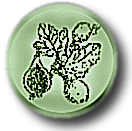Subsystem: Histidine Biosynthesis
This subsystem's description is:
PRPP, from the pentose phosphate pathway, and ATP are the substrates of the first reaction catalyzed by ATP phosphoribosyltransferase (HisA). This is a highly regulated phosphotransferase. HisAa, is an ATP phosphoribosyltransferase catalytic subunit, and HisAb and HisAb2 are ATP phosphoribosyltransferase regulatory subunits that may assist in the formation of the first product of the pathway, phosphoribosyl-ATP. The next three steps in the pathway include phosphoribosyl-ATP pyrophosphatase, phosphoribosyl-AMP cyclohydrolase and phosphoribosylformimino-5-aminoimidazole carboxamide ribotide isomerase (HisB, HisC, and HisD, respectively). Imidazole glycerol phosphate synthase has a cyclase subunit (HisEa) and an amidotransferase subunit (His Eb). These steps are followed by ones catalyzed by imidazoleglycerol-phosphate dehydratase (HisF), and histidinol-phosphate aminotransferase (HisG). Histidinol-phosphatase (HisH), the next step in the pathway, may have an alternative form (HisH2). The final step of the histidine pathway, histidinol dehydrogenase (HisI) produces L-Histidine.
For more information, please check out the description and the additional notes tabs, below
| Diagram | Functional Roles | Subsystem Spreadsheet | Description | Additional Notes | Scenarios | |||||||||||||||||||
Oops! We thought there was a diagram here, but we can't find it. Sorry
PRPP, from the pentose phosphate pathway, and ATP are the substrates of the first reaction catalyzed by ATP phosphoribosyltransferase (HisA). This is a highly regulated phosphotransferase. HisAa, is an ATP phosphoribosyltransferase catalytic subunit, and HisAb and HisAb2 are ATP phosphoribosyltransferase regulatory subunits that may assist in the formation of the first product of the pathway, phosphoribosyl-ATP. The next three steps in the pathway include phosphoribosyl-ATP pyrophosphatase, phosphoribosyl-AMP cyclohydrolase and phosphoribosylformimino-5-aminoimidazole carboxamide ribotide isomerase (HisB, HisC, and HisD, respectively). Imidazole glycerol phosphate synthase has a cyclase subunit (HisEa) and an amidotransferase subunit (His Eb). These steps are followed by ones catalyzed by imidazoleglycerol-phosphate dehydratase (HisF), and histidinol-phosphate aminotransferase (HisG). Histidinol-phosphatase (HisH), the next step in the pathway, may have an alternative form (HisH2). The final step of the histidine pathway, histidinol dehydrogenase (HisI) produces L-Histidine. Variant Codes: 1 - pathway is present missing - the pathway is there, but some genes have not been identified -1 - pathway is not present 0 - this still needs work ---------------------- The conventions for nomenclature suggested by Roy Jensen and his team are used for the proteins of the Histidine biosynthesis subsystem. Older, corresponding acronyms are given: New As Above Earlier Nomenclature Role (as for E.coli) HisA HisG ATP phosphoribosyltransferase HisAb HisZ tRNA homolog functioning as regulatory unit HisB HisI (sometimes HisE) Phosphoribosyl-ATP pyrophosphatase HisC HisI Phosphoribosyl-AMP cyclohydrolase HisD HisA Phosphoribosylformimino-5-aminoimidazole carboxamide ribotide isomerase HisEa HisF Imidazole glycerol phosphate synthase cyclase subunit HisEb HisH Imidazole glycerol phosphate synthase amidotransferase subunit HisF HisB Imidazoleglycerol-phosphate dehydratase HisG HisC Histidinol-phosphate aminotransferase HisH HisB (sometimes HisK Histidinol-phosphatase or HisJ) HisI HisD Histidinol dehydrogenase ================================================================================================= I use only the variant codes of 0, -1, and 1 (1 meaning "an operational variant probably exists") hisH is missing in a number of organisms. There are clusters in some of these organisms containing an inositol phosphatase Observations from Ross Overbeek, I believe that some of these are, probably, Histidinol-phosphatase (EC 3.1.3.15). I mentioned this to Joern Kalinowski who works with Corynebacterium at Bielefeld. He wrote back saying that the gene I pointed to in Corynebacterium was not hisH, but "although the report on the disruption of the impA gene within the his gene cluster in Mycobacterium smegmatis did not sound encouraging, some of our lab work revealed rather exciting news. We found a histidine-auxotrophic phenotype in Corynebacterium glutamicum by deleting an impA paralogous gene (NCgl0765). This gene is most probably the missing hisK homolog." [at the time of this note we were using hisK to reference the histidinol phosphatase] This led to the HisH2 assignments in this spreadsheet. However, it is really impossible without some wet lab work to figure out which of the "inositol phosphatases" are really HisH. I believe that some of the genes that cluster with the histidine biosynthetic genes are really hisK, although not all of them. For now, treat the HisK2 calls as quite tentative. I recently noticed that a set of phosphatases in Neissseria and Haemophilus that I had annotated as hisK were really involved in cell-wall synthesis. The whole hisH hisH2 question needs wet lab work. I have tried to call the hisH2s, but the inositol monophosphatase family will have to be carefully disambuated in the wet lab. ------------------------- Perhaps it is worth noting that in the Enterobacteriales 6-phosphogluconate dehydrogenase (EC 1.1.1.44) appears to cluster with Histidine Biosynthesis, although often clearly not on the same strand. The conjecture would be that the region of DNA is co-regulated (unwrapped?), and that the conversion of 6-phospho-gluconate to rubulose-5-phosphate is co-regulated. I am not sure if this makes sense, but it does seem possible to me. ==================== Note that in Clostridium thermocellum ATCC 27405, Phosphoribosylaminoimidazole-succinocarboxamide synthase (EC 6.3.2.6) is embedded within the histidine biosynthesis cluster. ==================== Note that Chloroflexus aurantiacus appears to have both hisA and hisAb So does Rhodopseudomonas palustris CGA009 In Brucella abortus the regulatory unit hisAb is adjacent to the tRNA synthetase (6.1.1.21); might this have been where the duplication occurred? ==================== Note that in general Streptococci are lacking the entire his cluster with the exeption of Streptococcus thermophilus ACTT BAA-491 and Streptococcus mutans UA159 which seem to have equired the cluster by transposition? Currently selected organism: Anabaena variabilis ATCC 29413 (open scenarios overview page for organism)

| ||||||||||||||||||||||||




